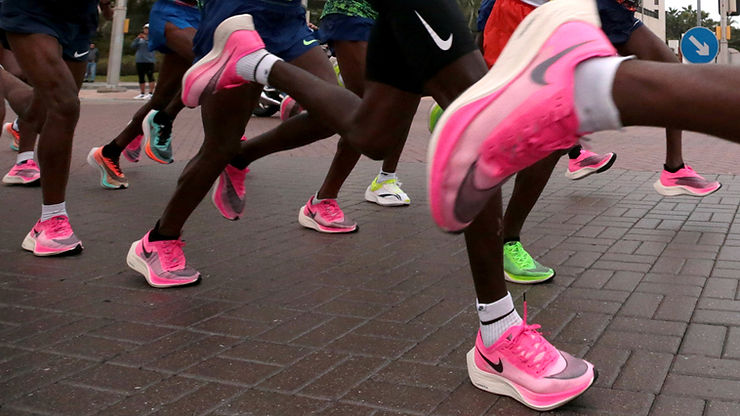By: Joshua Dong
When taking up running or doing track and field, many people’s first considerations on what preparation is needed is shoes–what shoes are good for running in general?
The choice of shoes is, surprisingly, not all that important. Focusing on self-growth and developing muscular and running endurance, regardless of the shoes worn, is always going to be better than relying on the latest shoe technology to improve.
The difference between normal running shoes and super shoes are that super shoes have a rigid and curved carbon-fiber plate running down the entire length of the shoe that acts like a catapult, adding an extra spring to anyone’s step if they are wearing the super shoes.
The Nike Zoom Vaporfly 4%, a bouncy pair of running shoes, cost over $275. For reference, normal running shoes from Nike can be bought for less than $50. So, the question arises – Should people spend more money on better running shoes that give runners a boost while running?
The answer is complicated. Of course, with better shoes, runners will inevitably perform better by having that extra spring in their steps without using any energy. But, performance doesn’t always connect with improving the body to run better.
Recently, a pilot study from California State University, East Bay, found some evidence that those who wore traditional running shoes without anything added to increase endurance and energy complained of more muscle pain but improved their running more than those who wore super shoes. This was done by comparing runner fitness gains in traditional racing shoes compared to super shoes.
In addition, Adam Tenforde and Amol Saxena, two experts in studying running injuries, believe that regularly using the super shoes can lead to very serious ailments and injuries due to stresses on the bones and tissue structures. Their claims are supported by five case studies of bone injuries from using super shoes.
There is a lot of evidence that supports the contrary–that super shoes are not as damaging as they might be perceived by these studies. Wouter Hoogkamer and Max Paquette, two leading super-shoe researchers, say there is no data that runner biomechanics are very different in super shoes than in traditional ones.
One example of a benefit in using super shoes are that older runners who use it can recover faster and run more than they usually do, getting more practice. “The big benefit for me is that I recover faster in super shoes,” said Salazar a 77-year-old runner from Arizona, who ran a 4 hour 22 minute marathon in Berlin last September.
Runners wearing super shoes can generally maintain and finish with a more consistent and faster pace during marathons. The cushioning and recovery benefits of the super shoes cannot be ignored, yet it has been known to cause injuries from bone and tissue stresses from the stresses the shoe puts on a runner’s foot.
Kelvin Kiptum, a Kenyan marathoner that recently participated in the London Marathon wearing super shoes in April got the second-fastest marathon time ever, with two hours and 1 minute. Taking it from the best then, super shoes seem to work very well, but if risk is not an option or if there are financial concerns, just go with the old-fashioned shoes and improve your running economy more along the way.
Source:
The Real Power of Super Shoes Could Be Supercharged Training – The New York Times











